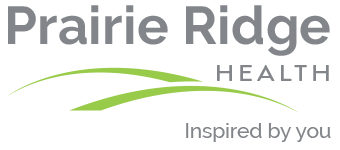Every month is breast cancer awareness month
According to the American Cancer Society, Breast cancer is the most common cancer among American women, except for skin cancers. About 1 in 8 (12%) women in the US will develop invasive breast cancer. The American Cancer Society's estimates for breast cancer in the United States for 2016 are:
- About 246,660 new cases of invasive breast cancer will be diagnosed in women.
- About 61,000 new cases of carcinoma in situ (CIS) will be diagnosed (CIS is non-invasive and is the earliest form of breast cancer).
- About 40,450 women will die from breast cancer.
“Mammograms can assist health care providers in finding or detecting breast cancer early, when it is easiest to treat, even before a lump may be felt,” said Buzzell.
Both screening mammograms and diagnostic mammograms are offered at PRH in a MQSA-ACR certified mammography program. Radiology services are provided by Madison Radiologists, with Mark F. Rich, M.D. serving on the active medical staff at PRH.
"Mammography remains the best screening tool for breast cancer detection,” said Dr. Rich.
If a patient needs additional views or screenings or further treatment based on the result of the mammogram, further guidance is provided by the PRH Breast Health Nurse Specialist and Cancer Navigation Coordinator.
Buzzell assures the radiation released during a mammogram is minimal. “The benefits of mammography outweigh any possible harm from the radiation exposure,” she explained. “Modern machines use low radiation doses to get breast x-rays that are high in image quality.”
The American Cancer Society states that on average the total dose for a typical mammogram with two views of each breast is about 0.4 mSv. (A mSv is a measure of radiation dose.)
To put dose in perspective, ACS states that people in the U.S. are normally exposed to an average of about 3 mSv of radiation each year just from their natural surroundings. (This is called background radiation.) The dose of radiation used for a screening mammogram of both breasts is about the same amount of radiation a woman would get from her natural surroundings over about 7 weeks.
Women with a higher risk of breast cancer should talk with a doctor about the best early detection plan for them. This might mean starting mammograms when they are younger, having extra screening tests, or having more frequent exams.
The most common symptom of breast cancer is a new lump or mass. It is important to have any new breast mass or lump or breast change checked by a health care professional experienced in diagnosing breast diseases.
Other possible signs of breast cancer include:
- Swelling of all or part of a breast (even if no distinct lump is felt)
- Skin irritation or dimpling
- Breast or nipple pain
- Nipple retraction (turning inward)
- Redness, scaliness, or thickening of the nipple or breast skin
- Nipple discharge (other than breast milk)
For more information regarding the PRH Medical Imaging Department, call 920-623-1210 or visit www.columbuscommunityhospital.org. For more information regarding the American Cancer Society, visit www.cancer.org.

